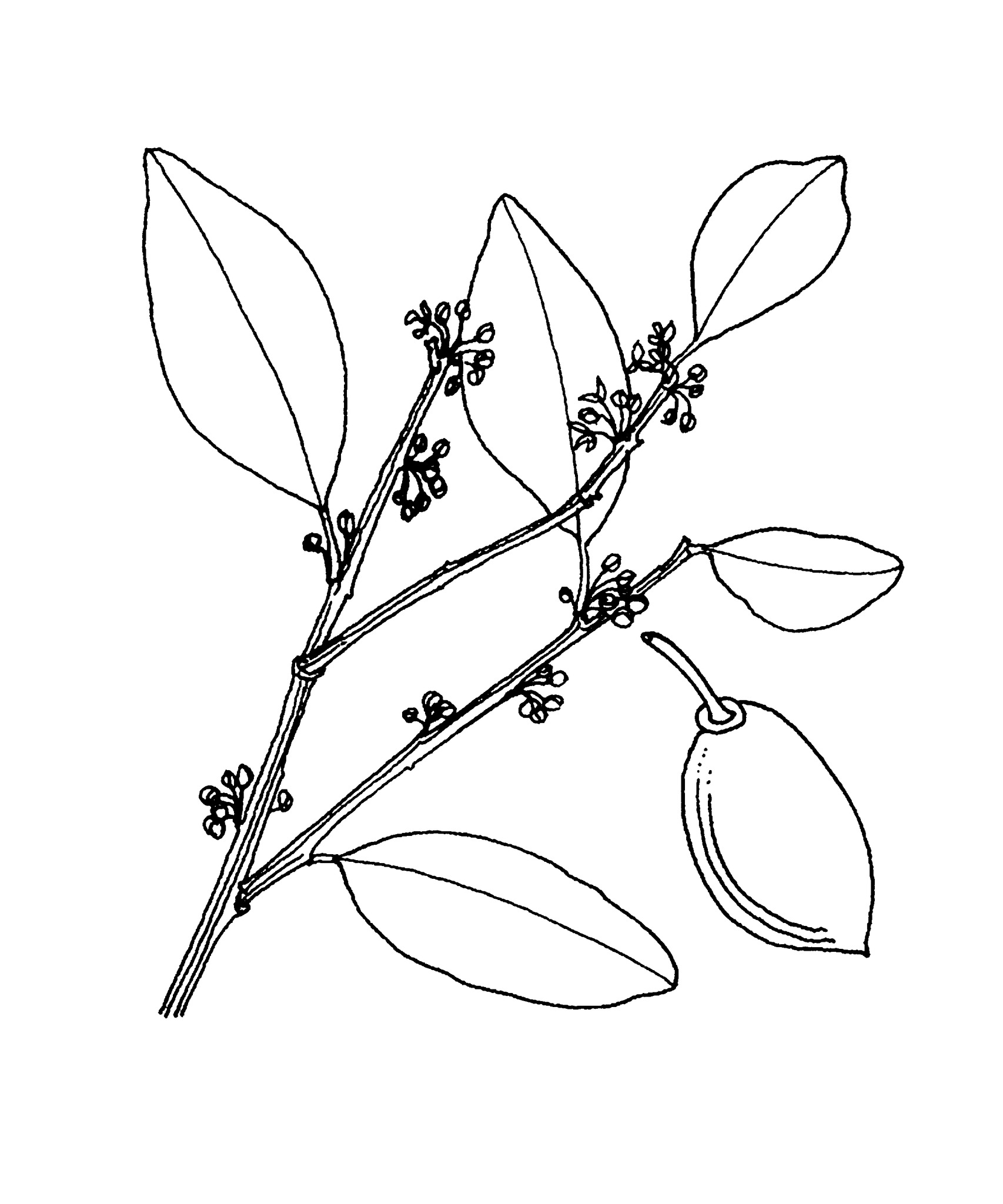
Trees or rarely shrubs, lacking latex, dioecious or rarely polygamo-dioecious or monoecious, producing glucosinolates (mustard oils). Leaves alternate, rarely opposite and 2-ranked, simple, petiolate, entire to serrate; stipules usually present. Inflorescences axillary, in fascicles or ocassionally of a single flower. Flowers regular, unisexual; sepals (3–)4–5(–7), free or slightly fused; petals absent. Male flowers with (2–)4–10(–50) stamens, free; anthers 2-celled, dehiscing by longitudinal slits; rudimentary ovary sometimes present. Female flowers with ovary superior, carpels 1–2(–4), fused, ovules 2 per cell, styles (0–)1–2(–4), basally fused, entire or 2-lobed, stigmas sometimes large and dilated (in Putranjiva), placentation axile; staminodes absent; nectary disc present or absent (in Putranjiva). Fruit a drupe, usually 1-seed by abortion (sometimes 2-seeded). Seeds ecaranculate.
3 genera and about 210 species, predominantly in tropical and subtropical areas of the world; 1 genus and 4 species in Australia.
Putranjivaceae are trees to shrubs that may be recognised by their two-ranked, stipulate leaves which often taste peppery to some degree when fresh, or have a characteristic scent. They are apparently the only family outside the Brassicales known to produce glucosinolates (Rodman et al. 1998). The flowers are often in fasciles, and the fruit is usually a single-seeded drupe with persistent, dilated stigmas.
Putranjivaceae were previously considered included in Euphorbiaceae subfam. Phyllanthoideae Kosteletzky (now Phyllanthaceae). This treatment follows Stevens, P.F. (2018, Angiosperm Phylogeny Website).
Created by: Val Stajsic
Updated by: Val Stajsic, April 2018
